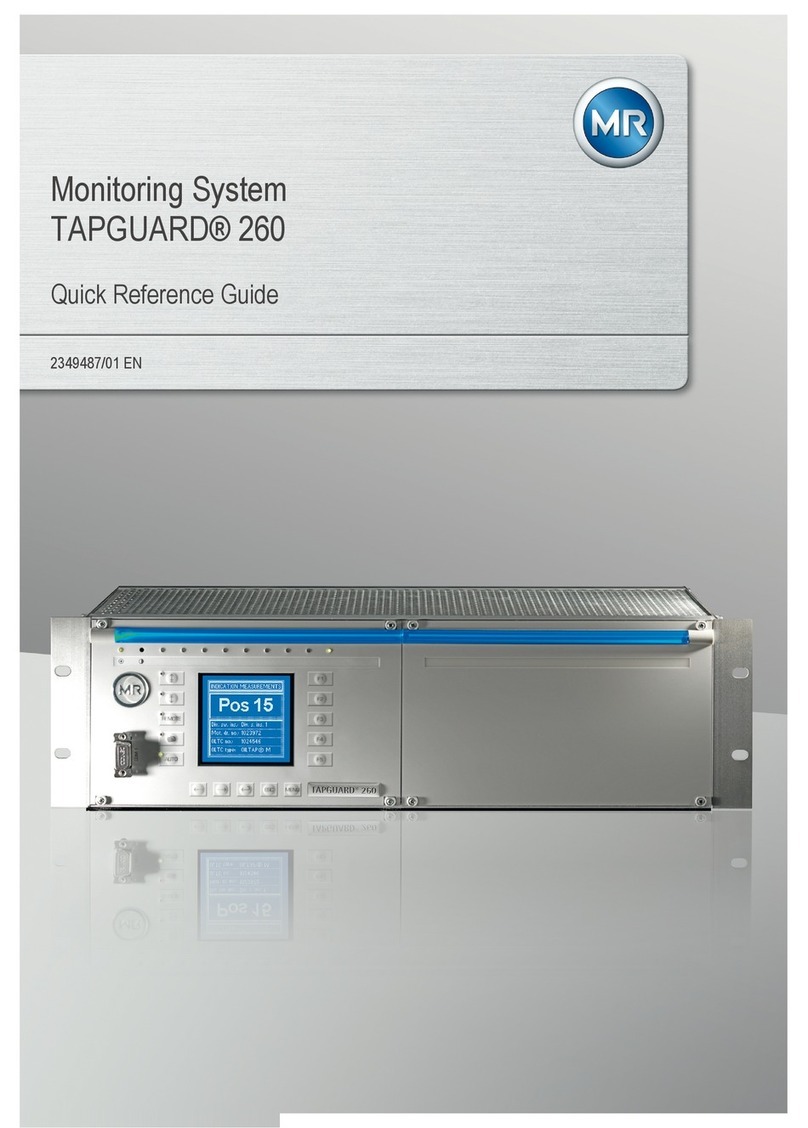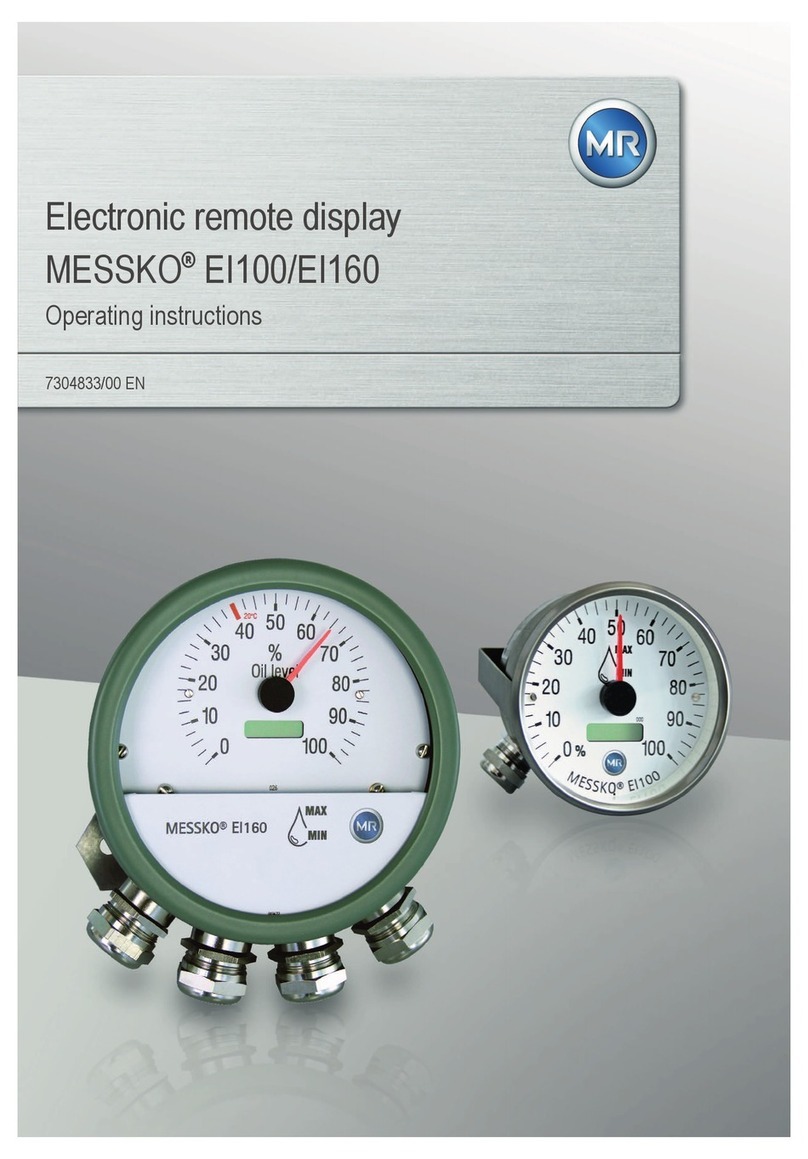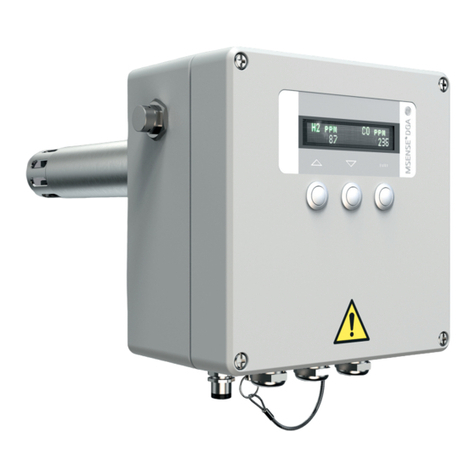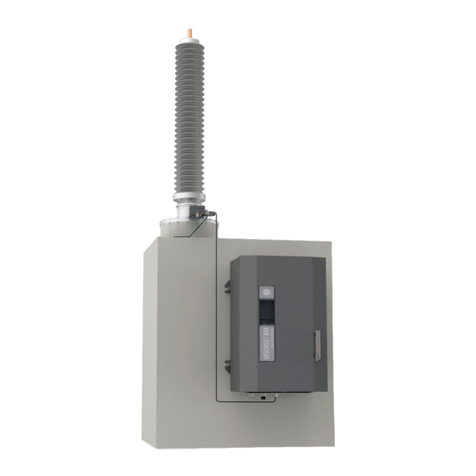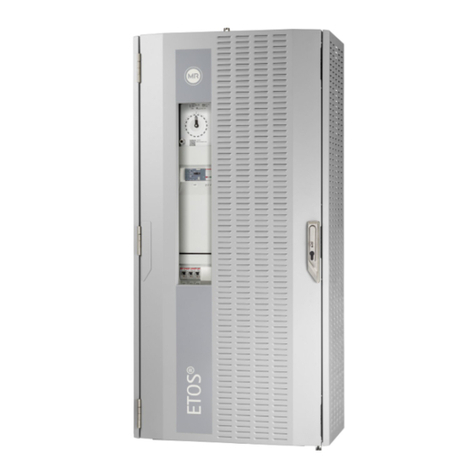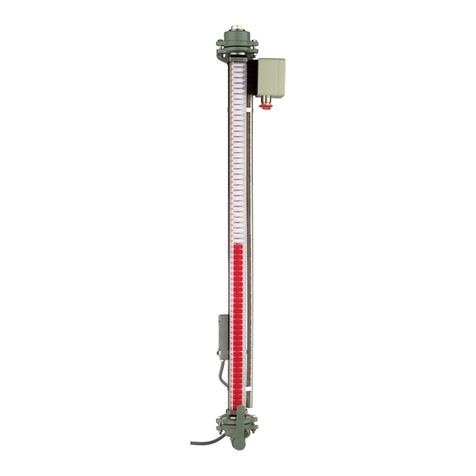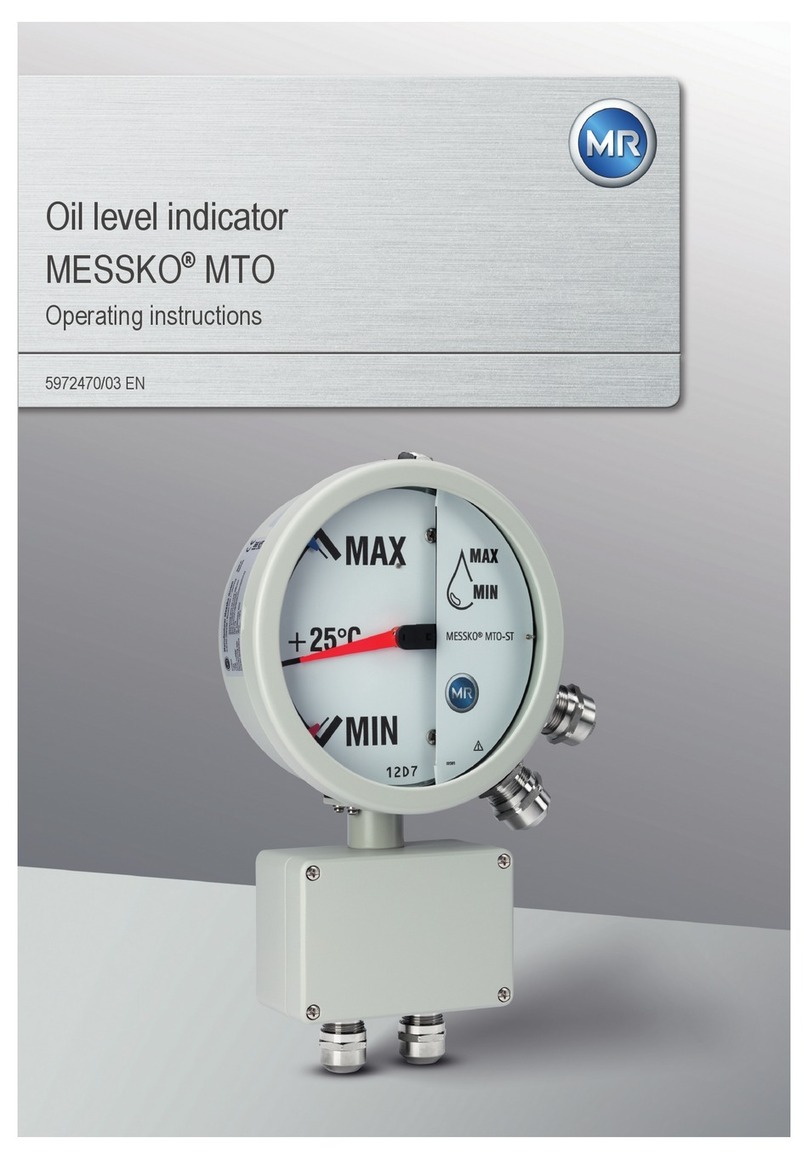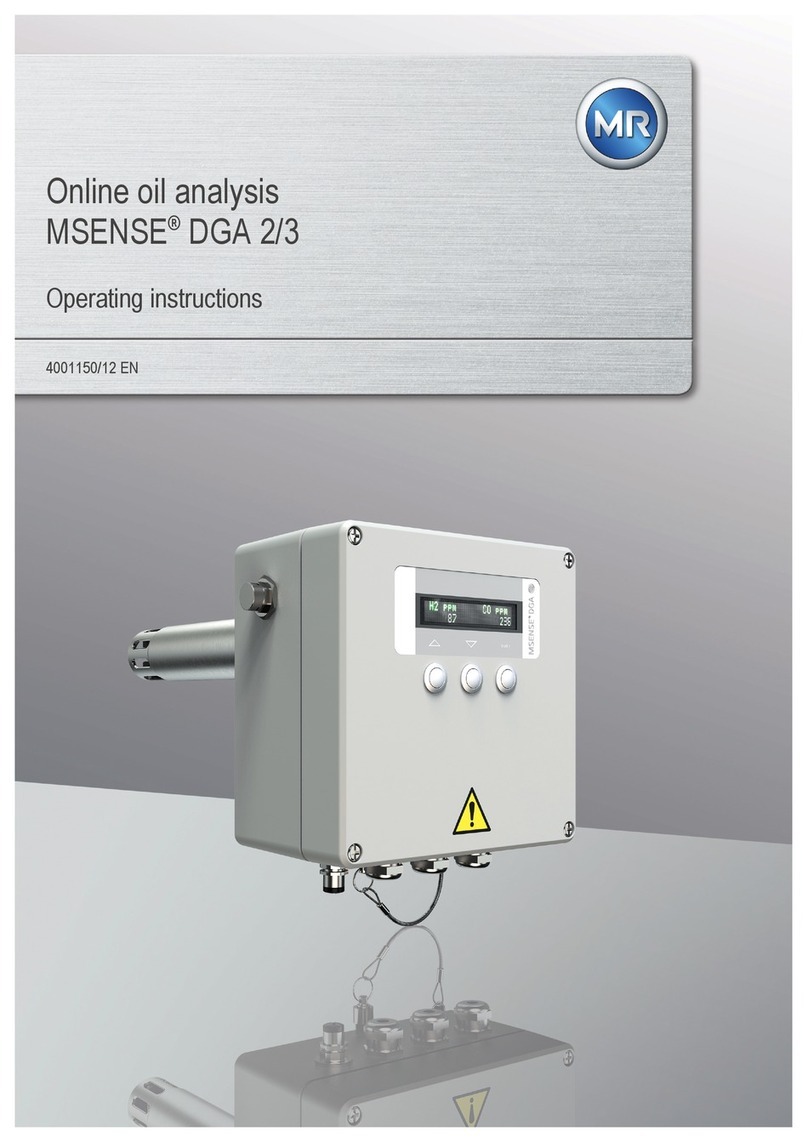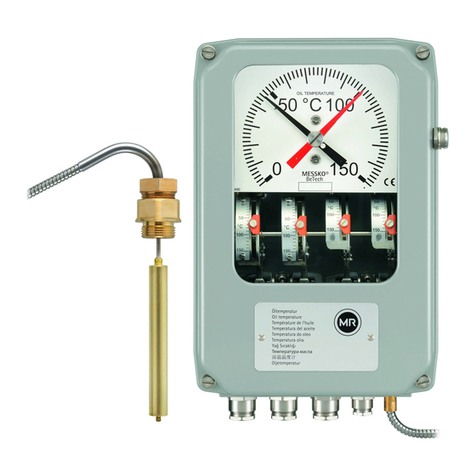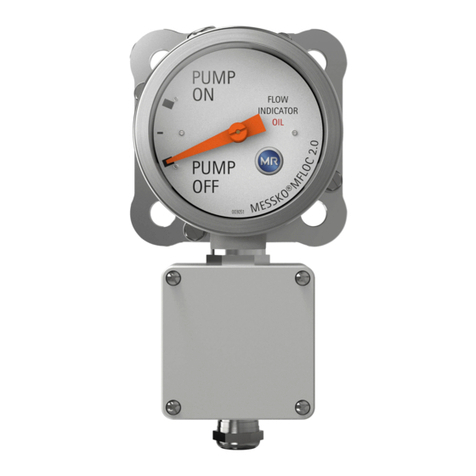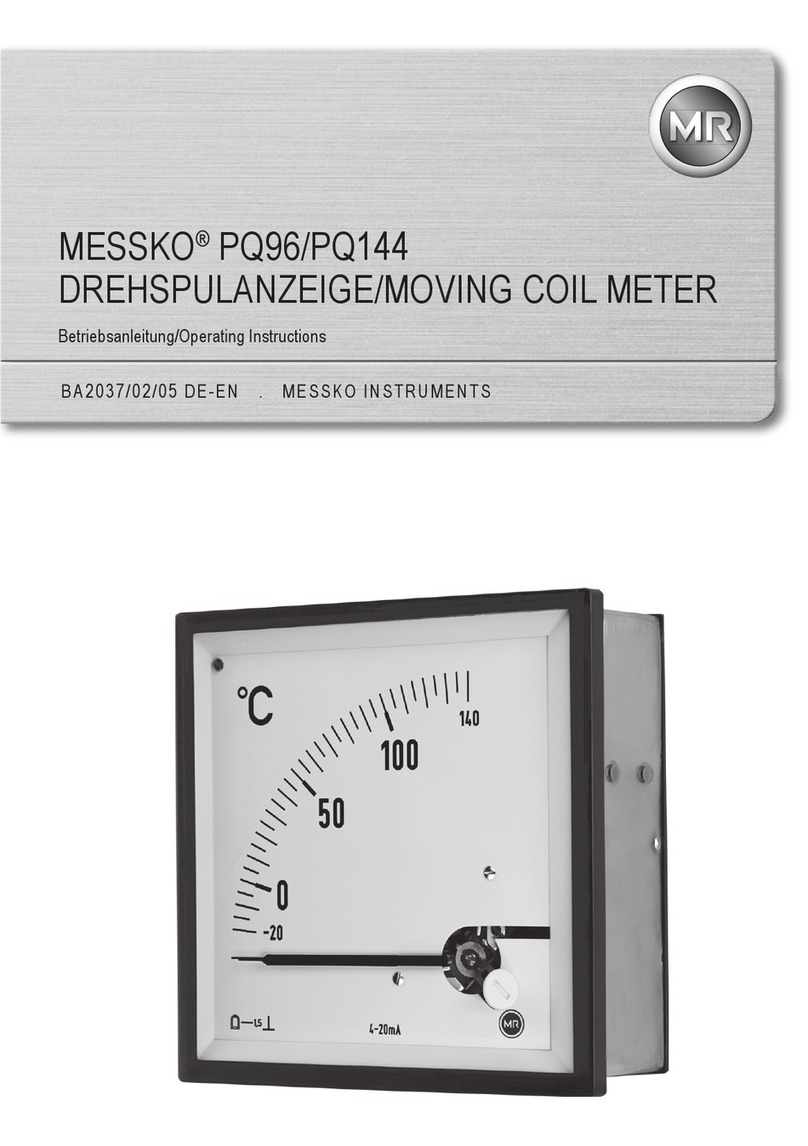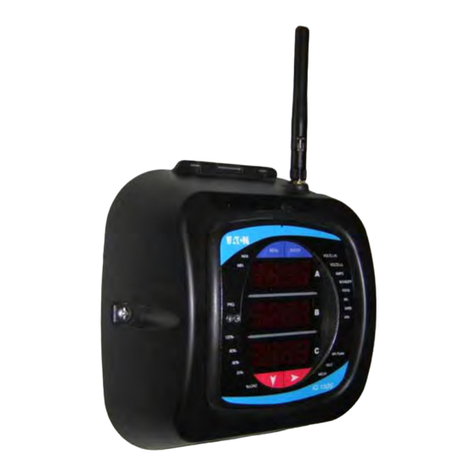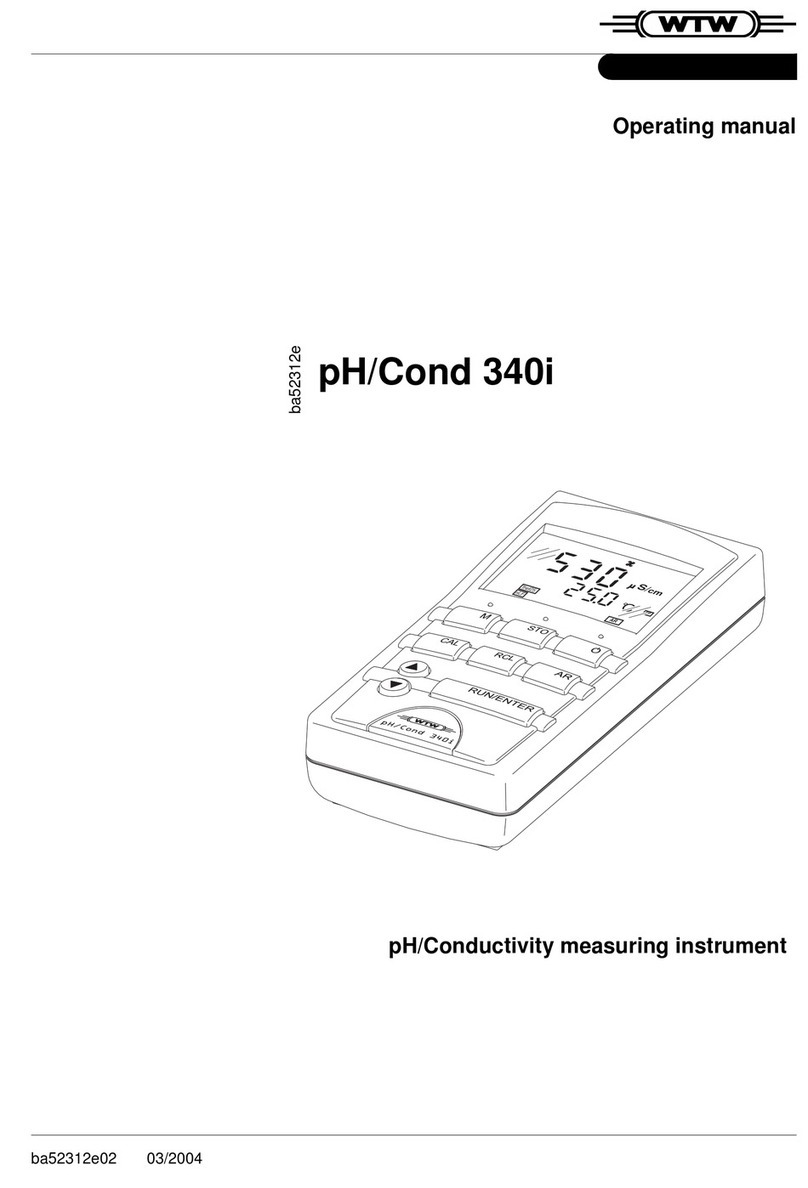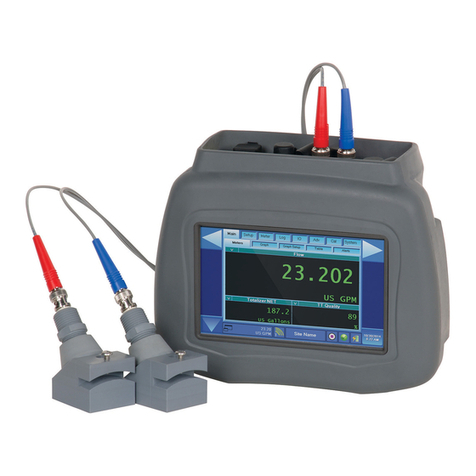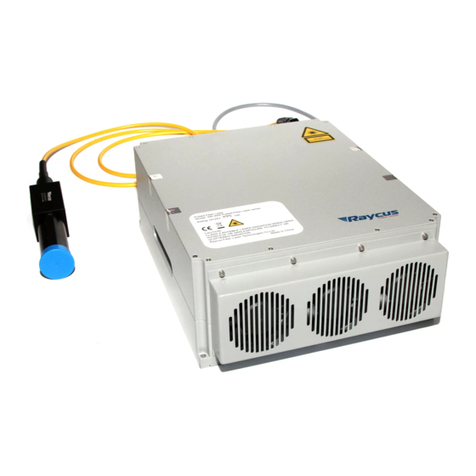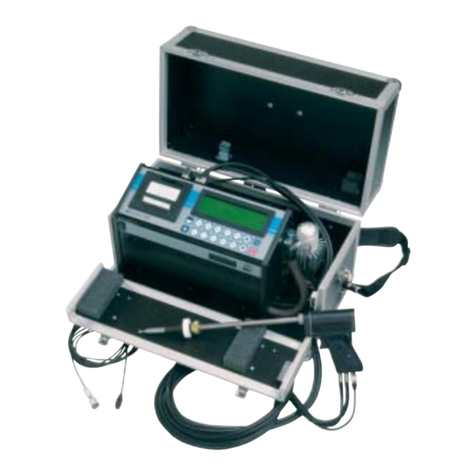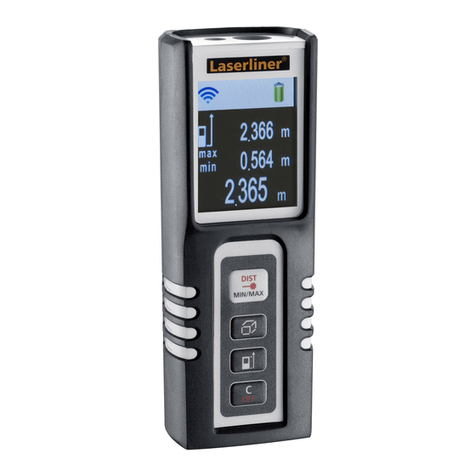MR MSENSE DGA 9 User manual

MSENSE®DGA 9 7045899/02 EN –11.2020 Page 1
Online –Oil analysis
MSENSE®DGA 9
Installation and Operating Instructions
7045899/02 EN –11.2020

MSENSE®DGA 9 7045899/02 EN –11.2020 Page 2
Your contact for all inquiries about the MSENSE® DGA 9:
MR Service & Complaint
Maschinenfabrik Reinhausen GmbH
Falkensteinstraße 8
93059 Regensburg
Germany
service@reinhausen.com
complaint@reinhausen.com
If required, you will receive at this address
more information about the product and issues
this technical document.
The MSENSE® DGA 9 will be available for the
Maschinenfabrik Reinhausen GmbH manufactured by:
EMH Energie-Messtechnik GmbH
Vor dem Hassel 2
D-21438 Brackel
Germany
MTE Meter Test Equipment AG
Landis + Gyr-Strasse 1
CH-6300 Zug
Switzerland
Copyright MTE Meter Test Equipment AG
All rights reserved
The contents of this publication
can be modified without prior notice.
The greatest care has
been taken with the preparation of texts, illustrations and programs.
Nevertheless, MTE Meter Test Equipment AG
cannot be held legally responsible for any
remaining faulty specifications
nor accept any liability for these.

MSENSE®DGA 9 7045899/02 EN –11.2020 Page 3
List of contents
1. Introduction................................................................................................................................6
Contact.................................................................................................................................6
Revision Rights.....................................................................................................................6
Completeness.......................................................................................................................6
Legal provisions....................................................................................................................7
Safety Guidelines .................................................................................................................7
2. Safety..........................................................................................................................................8
Intended Use........................................................................................................................8
Basic safety instructions.......................................................................................................8
Qualification of the staff......................................................................................................10
Personal protective equipment ...........................................................................................11
IT security...........................................................................................................................11
3. General information.................................................................................................................13
4. Mountinginstructions..............................................................................................................14
Installation position.............................................................................................................14
Safety notes on installation.................................................................................................15
Heating ..................................................................................................................................15
Preparing installation..........................................................................................................18
4.3.1 Mechanical connection................................................................................................18
4.3.1.1 Flange connection................................................................................................18
4.3.1.2 Threaded joint ......................................................................................................18
4.3.2 Supply voltage connection...........................................................................................19
4.3.3 Tools required .............................................................................................................19
4.3.4 Sealing of the connecting thread .................................................................................19
4.3.4.1 Thread sealing tape..............................................................................................19
4.3.4.2 Thread adhesive...................................................................................................20
4.3.4.3 Flat gasket............................................................................................................20
Installation..........................................................................................................................21
4.4.1 Mechanical installation.................................................................................................21
4.4.1.1 Direct mounting....................................................................................................21
4.4.1.2 Indirect mounting..................................................................................................38
4.4.2 Electrical connection....................................................................................................44
4.4.3 Initial start-up...............................................................................................................47
4.4.4 Turn off the device.......................................................................................................49
4.4.5 Automatic activation following the interruption of the supply voltage............................50
5. Hardware components............................................................................................................51
Internal front view with controls...........................................................................................51
View of rear........................................................................................................................52
Connections for the measuring and controller card.............................................................54
5.3.1 Configuration of relay output 1 with coding bridge 1 (J1) .............................................58
Extraction menu ......................................................................................................65
5.4.1 Hardware components.................................................................................................65
6. Device firmware.......................................................................................................................68
General information............................................................................................................68
6.1.1 Main screen.................................................................................................................68

MSENSE®DGA 9 7045899/02 EN –11.2020 Page 4
Process flow.......................................................................................................................69
6.2.1 Zero measurement......................................................................................................70
6.2.2 Vacuum generation .....................................................................................................71
6.2.3 Leak testing.................................................................................................................72
6.2.4 Filling level L1..............................................................................................................73
6.2.5 Degasing.....................................................................................................................74
6.2.6 Filling level L2..............................................................................................................75
6.2.7 Gas measurement.......................................................................................................76
6.2.8 Ventilation....................................................................................................................77
6.2.9 Draining.......................................................................................................................78
6.2.10 Ventilation....................................................................................................................78
6.2.11 Waiting (only when switching from measurement cell # 2 to measurement cell # 1)....79
Operation by means of device keyboard.............................................................................80
6.3.1 Cursor keys.................................................................................................................80
6.3.2 “Home” key..................................................................................................................80
6.3.3 Alphanumeric keypad..................................................................................................80
6.3.4 Contrast settings..........................................................................................................81
Main menu..........................................................................................................................82
Extraction status......................................................................................................83
6.5.1 Acknowledge fault ............................................................................................86
6.5.2 Deactivate device (“unmount”)..........................................................................86
6.5.3 Activating the device (“mount”) .........................................................................86
Gas-in-oil measurements.........................................................................................87
6.6.1 Graph view.......................................................................................................88
6.6.2 Table view........................................................................................................89
Duval triangle..........................................................................................................90
Alarm / Alarm history...............................................................................................90
6.8.1 Alarm acknowledegement ................................................................................92
6.8.2 Alarm settings of the selected alarm.................................................................92
Device settings........................................................................................................93
6.10.1 Transformer-related settings.............................................................................94
6.10.1.1 DGA adjustment........................................................................................94
6.10.2 Settings –analogue outputs..............................................................................95
6.10.3 Alarm limits and alarm sources.........................................................................97
6.10.3.1 Create new alarm......................................................................................98

MSENSE®DGA 9 7045899/02 EN –11.2020 Page 5
6.10.3.2 Alarm settings............................................................................................99
6.10.4 MSENSE®DGA Settings................................................................................102
6.10.4.1 DGA measurement cycle interval ............................................................103
6.10.4.2 Test digital outputs ..................................................................................104
6.10.4.3 Device options.........................................................................................105
6.10.4.4 Date, time, clock settings.........................................................................107
6.10.4.5 Communication / Interfaces.....................................................................109
7. Modbus Function, register and address mapping ..............................................................123
MODBUS TCP..................................................................................................................126
MODBUS Serial Communication Adapter Example..........................................................126
7.9.1 MODBUS RS232 ASCII with Modpoll (RS232 for service purposes only)..................126
7.9.2 MODBUS / RTU on RS485 bus (with Modpoll)..........................................................127
8. RS 485 Wiring ........................................................................................................................129
RS485 ..............................................................................................................................129
Termination, working point setting, earthing and protection of the RS485 bus..................129
9. Troubleshooting ....................................................................................................................130
Extraction chamber fault...................................................................................................130
9.1.1 Brief instructions on site.............................................................................................130
9.1.2 Brief instructions by way of remote diagnosis............................................................130
9.1.3 Gas extraction principle.............................................................................................131
9.1.3.1 Extraction cycle..................................................................................................131
9.1.3.2 Device activation ................................................................................................131
9.1.4 Fault..........................................................................................................................131
9.1.5 Fault –Signalling.......................................................................................................132
9.1.6 Faults –Analysis and acknowledgement options.......................................................132
9.1.6.1 Reading out service data....................................................................................132
9.1.6.2 Brief instruction on reading out service data.......................................................133
9.1.6.3 On-site fault analysis..........................................................................................133
9.1.6.4 Fault - Extraction status menu............................................................................134
9.1.6.5 Fault –Acknowledgement by hand.....................................................................135
9.1.6.6 Fault –Acknowledgement via command file.......................................................135
9.1.7 MSET DGA Service Tool...........................................................................................135
9.1.7.1 Distribution / Installation......................................................................................135
9.1.7.2 System requirements..........................................................................................135
9.1.7.3 Sequence diagnostics –Data read.....................................................................136
10. Technical specifications .......................................................................................................140
11. Dimensions MSENSE®DGA 9...............................................................................................142
Dimensions gate valve / ball valve connection..................................................................143
11.1.1 Pipe thread G 1½” DIN ISO 228-1.............................................................................143
11.1.2 Pipe thread 1½” NPT ANSI B 1.20.1..........................................................................143

MSENSE®DGA 9 7045899/02 EN –11.2020 Page 6
1. Introduction
This technical file contains detailed descriptions to safely and properly install, connect, commission,
and monitor the product.
The target group of this technical document is exclusively specially trained and authorized specialist
personnel.
Contact
Your contact for all inquiries about the MSENSE® DGA 9:
MR Service & Complaint
Maschinenfabrik Reinhausen GmbH
Falkensteinstraße 8
93059 Regensburg
Germany
service@reinhausen.com
complaint@reinhausen.com
If required, you will receive further information on the product and issues of this technical document at
this address.
The MSENSE® DGA 9 is manufactured for Maschinenfabrik Reinhausen GmbH by:
EMH Energie-Messtechnik GmbH
Vor dem Hassel 2
D-21438 Brackel
Germany
MTE Meter Test Equipment AG
Landis + Gyr-Strasse 1
CH-6300 Zug
Switzerland
Revision Rights
The information contained in thistechnical document is the technical specifications released at thetime
of printing. Significant changes will be reflected in a new edition of the technical file.
Document name and version number of this technical document can be found in the footer.
Completeness
This technical document is only complete together with the other applicable documents.
The following documents apply to this product:
•Installation and Operating Instructions MSENSE® DGA 9 (this document)
•Operating Instructions MSET DGA Software
•Test report

MSENSE®DGA 9 7045899/02 EN –11.2020 Page 7
Legal provisions
Trademark
Microsoft, Microsoft Windows are either registered trademarks or trademarks of Microsoft Corporation
in the United States and / or other countries.
All other trademarks, registered trademarks, service marks and trade names are the property of their
respective owners.
Disclaimer
After the editorial deadline of this documentation, the product may have changed. The information in
this document is subject to change without notice and does not constitute an obligation of Maschi-
nenfabrik Reinhausen GmbH.
Changes to the technical data or design changes and changes to the scope of delivery are expressly
reserved. The data and illustrations contained in this document, which expressly refer to third-party
devices and equipment, are not binding. In principle, the information and agreements reached when
processing the respective offers and orders are binding. The original operating instructions were cre-
ated in German.
Maschinenfabrik Reinhausen GmbH assumes no responsibility for any errors that may occur in this
operating manual prepared by the manufacturer. If you have suggestions for improvement or changes
or have found errors in this manual, please inform us. No part of this document may be reproduced in
any form or by any means, electronic or mechanical, including photocopying, without the express writ-
ten permission of Maschinenfabrik Reinhausen GmbH and the manufacturer. All rights reserved.
Safety Guidelines
This manual contains notices that you must observe in the interests of your own personal safety and
to avoid damageto property. The instructionsfor your personal safety are marked by a warning triangle.
Those who only refer to the prevention of property damage have no warning triangle. The warnings
are displayed in decreasing order of severity according to the respective hazard level.
Death or serious injury will result if proper precautions are not taken. Property damage
can occur if the appropriate precautionary measure is not taken. An undesirable result
or condition may occur if the corresponding note is ignored.
In cases where two or more levels of danger apply, only the most severe level warning is used on its
own. A warning with a warning triangle refers primarily to possible personal injury. But it can also mean
property damage at the same time.
For the personalsafety of the installation and operating personnel, please observe and follow the safety
instructions in the chapter of this manual!

MSENSE®DGA 9 7045899/02 EN –11.2020 Page 8
2. Safety
This technical file contains detailed descriptions to safely and properly install, connect, commission,
and monitor the product.
•Read this technical document carefully to familiarize yourself with the product.
•This technical document is part of the product.
•Read and pay special attention to the safety instructions in this chapter.
•Observe the warnings in this technical file in order to avoid dangers arising from the operation.
•The product is manufactured according to the state of the art. Nonetheless, dangers to the life
and limb of the user or impairments of the product and other material assets may occur due to
functional use.
Intended Use
The MSENSE® DGA is intended exclusively for use in systems and facilities of electrical power engi-
neering. It is used for the early detection and reporting of evolving, potentially harmful trends in the
monitored equipment (e.g., transformer) by measuring the concentration of gases and moisture in the
equipment's insulating oil.
The device is not designed and is not capable of detecting very fast developing faults and thus not
intended to protect the device from such faults (e.g., by shutting down). For this purpose, please use
safety devices designed for this purpose.
Proper use and compliance with the conditions and conditions specified in this technical file as well as
the warnings contained in this technical documentation and on the product do not pose a risk to per-
sons, property and equipment
Environment. This applies over the entire service life, from delivery to assembly and operation to dis-
assembly and disposal.
The intended use is as follows:
•Operate the product according to this technical document, the agreed terms of delivery and the
technical data.
•Make sure that all necessary work is done by qualified personnel only.
•Use the devices supplied only for the intended purpose and in accordance with the specifica-
tions of this technical document.
•Observe the notes in thistechnical document for electromagnetic compatibility and thetechnical
data.Safety
Basic safety instructions
In order to prevent accidents, breakdowns, accidents and environmental damage, the person respon-
sible for the transport, installation, operation, maintenance and disposal of the product or parts of the
product must ensure that:

MSENSE®DGA 9 7045899/02 EN –11.2020 Page 9
Personal protective equipment
Loosely worn or unsuitable clothing increases the risk of being caught or wound on rotating parts and
the danger of getting caught on protruding parts. This poses a danger to life and limb.
•All necessary equipment as well as the personal protective equipment required for the respec-
tive activity such. As a helmet, protective work shoes, etc. wear. Observe the section "Personal
protective equipment".
•Never wear damaged personal protective equipment.
•Never wear rings, necklaces and other jewellery.
•For long hair wear hairnet.
Workspace
Disarray and unlit work areas can lead to accidents.
•Keep the work area clean and tidy.
•Make sure the work area is well lit.
•Comply with applicable accident prevention legislation in the country.
Explosion protection
Highly flammable or explosive gases, vapours and dusts can lead to severe explosions and fire.
•Do not mount and operate the product in potentially explosive atmospheres.
safety information
Warning labels and safety labels are safety labels on the product. They are an important part of the
security concept. Safety markings are shown and described in the chapter "Product description".
•Observe all safety labels on the product.
•Keep all safety labels on the product complete and legible.
•Replace damaged or obsolete safety markings.
Environmental conditions
To ensure reliable and safe operation, the product must only be operated under the ambient conditions
specified in the technical data.
•Observe specified operating conditions and site installation requirements.
Changes and conversions
Unauthorized or improper modifications of the product may result in personal injury, property damage
or malfunction.
•Change product only after consultation with Maschinenfabrik Reinhausen.
Spare Parts
Spare parts not approved by Maschinenfabrik Reinhausen can lead to personal injury and property
damage to the product.
•Use only replacement parts approved by the manufacturer.
•Contact Maschinenfabrik Reinhausen.
Working in the company
The product may only be operated in perfect working order. Otherwise there is danger to life and limb.

MSENSE®DGA 9 7045899/02 EN –11.2020 Page 10
•Check safety devices regularly for their functionality.
•The inspection work described in this technical file
perform regularly.
Qualification of the staff
The person responsible for installation, commissioning, operation, maintenance and inspection must
ensure adequate qualification of the personnel.
Electrician
The qualified electrician has knowledge and experience as well asknowledge of therelevant standards
and regulations due to their professional training. In addition, the electrician has the following skills:
•The electrician independently identifies possible dangers and is able to avoid them.
•The electrician is able to carry out work on electrical installations.
•The electrician is specially trained for the working environment in which she works.
•The electrician must comply with the provisions of the applicable accident prevention legisla-
tion.
Electrically trained persons
A person trained in electrical engineering is instructed and instructed by a qualified electrician about
the tasks assigned to him and possible dangers of improper behaviour, as well as protective devices
and protective measures. The person trained in electrical engineering works exclusively under the di-
rection and supervision of a qualified electrician.
Operator
The operator uses and operates the product within the scope of this technicaldocument. He is informed
and trained by the operator about the special tasks and the possible dangers of improper behaviour.
Technical service
It is strongly recommended that installations, maintenance, repairs and retrofits be carried out by our
technical service. This ensures the professional execution of all work. If work is not carried out by the
Maschinenfabrik Reinhausen technical service, it must be ensured that the personnel are trained and
authorized by Maschinenfabrik Reinhausen.
MR Service & Complaint
Maschinenfabrik Reinhausen GmbH
Falkensteinstraße 8
93059 Regensburg
Germany
service@reinhausen.com
complaint@reinhausen.com

MSENSE®DGA 9 7045899/02 EN –11.2020 Page 11
Personal protective equipment
At work, personal protective equipment is required to minimize health hazards.
•Always wear the necessary protective equipment during work.
•Never wear damaged protective equipment.
•Follow instructions in the work area for personal protective equipment.
Basically to be worn protective equipment
Protective clothing
Close-fitting work wear with low tear resistance, with tight sleeves and no protruding
parts. It is mainly used to protect against being caught by moving machine parts.
Safety shoes
To protect against heavy falling parts and slipping on slippery surfaces.
Special protective equipment in special ambient conditions
Safety goggles
To protect the eyes from flying parts and liquid splashes.
Face Shield
To protect the face from flying parts and liquid splashes or other dangerous sub-
stances.
Helmet
To protect against falling and flying parts and materials.
Ear protection
To protect against hearing damage.
Protective gloves
For protection against mechanical, thermal and electrical hazards.
IT security
Observe the following recommendations for the safe operation of the product.
•Make sure that only authorized persons have access to the device.
•Use the device only within an electronic security perimeter (ESP).
•Make sure that the device is operated only by trained personnel who are sensitized to IT secu-
rity.

MSENSE®DGA 9 7045899/02 EN –11.2020 Page 12
•All protocol interfaces (Modbus, DNP3 and IEC 61850) have read-only access to the
MSENSE® DGA 9. A change of parameters or data is not possible.
•Access to the parameterisation via the MSET parameterisation software can be protected by
passwords. Change the passwords on a regular basis.
Observe the notes on access authorisations, user levels and password settings in the operating in-
structions for the MSET parameterisation software.

MSENSE®DGA 9 7045899/02 EN –11.2020 Page 13
3. General information
The MSESNE DGA 9 device is a permanently installed multiple “gas-in-oil” analysis system. It enables
the individual measurement of oil moisture (H2O) and the key gases dissolved in the oil: hydrogen (H2),
carbon monoxide (CO), carbon dioxide (CO2), methane (CH4), acetylene (C2H2), ethylene (C2H4),
ethane (C2H6) and oxygen (O2).
While hydrogen (H2) occurs in almost every fault in the insulation system of power transformers and
carbon monoxide (CO) is a sign of problems with cellulose / paper insulation, the presence of or in-
crease in acetylene (C2H2) and ethylene (C2H4) serves to classify faults such as overheating, partial
discharge or high energy arcing.
Oxygen (O2) is an indicator of damage to the sealing of hermetically sealed transformers.
The key advantages
•Individual measurements of hydrogen (H2), carbon monoxide (CO), carbon dioxide (CO2), me-
thane (CH4), acetylene (C2H2), ethylene (C2H4), ethane (C2H6) and oxygen (O2).
•Measurement of oil moisture (H2O)
•Communication interfaces ETHERNET 10/100 Mbit / s (copper / RJ45 or fibre optic / SC du-
plex) and RS485 to support the transmission protocols MODBUS® RTU / ASCII, MODBUS®
TCP as well as the proprietary protocol.
•Optional on-board DNP3 serial modem for connection to a process control system (SCADA)
using communication protocol DNP3.
•Optional on-board IEC 61850 modem for communication with substations by means of com-
munication protocol IEC 61850.
This device may only be used in accordance with the instructions in this man-
ual.
If this device is used in a way not specified by the manufacturer, the guaran-
tee can expire and impair the protection to be determined by the measuring
device.
The device manufacturer does not accept any liability for property damage or
personal injury resulting from improper use or non-observance of the safety in-
structions.

MSENSE®DGA 9 7045899/02 EN –11.2020 Page 14
4. Mountinginstructions
Installation position
The installation location is very important for the correct function of the MSENSE®DGA 9. There are
three possible installation locations in the case of a typical transformer:
Pos. 1
Cooler return line:
Install the MSENSE®DGA 9 on a straight pipe section at the connection between the un-
derside of the cooler and the transformer tank. To avoid vacuum the device must always
be mounted on the discharge side (beyond the elbow) of the circulation pump.
Remark: Only choose this location if constant oil flow through the cooling system is
guaranteed.
Pos. 2
Drain valve transformer tank:
The flange of the drain valve must be fitted at a minimum height of 40 cm for the
MSENSE®DGA 9 to be installed.
Pos. 3
Upper filling valve:
This position may only be used if the oil level is at least 100 cm higher than the centre of
the device flange. However, it is not recommended since it is difficult to operate or read the
device in this position.
Pos. 4
Never install the MSENSE®DGA 9 above the cooler or on the intake side of the
pump!
Remark: There must be good and constant oil circulation available at the installation location.

MSENSE®DGA 9 7045899/02 EN –11.2020 Page 15
Safety notes on installation
The following safety notes must be strictly followed during installation. Otherwise no warranty claims
can be made.
Never remove the protective cap of the connecting thread before you are
ready to install the device at the transformer valve.
This cap protects the connection unit from damage by dust and other foreign
matter. In addition, it protects the connecting thread and/or the adapter.
Remark: Use the protective cap provided after you have dismantled the
device as well.
Device cap
Only trained personnel may remove the device protective cover; the power
supply must be switched off before the device protective cover is removed!
Danger due to hazardous voltage.
Heating
Do not lay external cables above the heating units, as in this case, temperatures
of up to approx. 80°C can occur in the event of a fault! Danger through heat.
Never close the ventilation opening for the oxygen supply. These are lo-
cated on the undersideof the device's protective hood and on the device's
back plate.
Never use and / or store hydro-carbonaceous compounds in the vicinity
of the measurement cell.
Never clean the MSENSE® DGA 9 with solvent, as the gases severely affect
the measurement accuracy and sensitivity of the sensors. Use only a dry cloth
to clean this device!
Never expose the connecting unit to vacuum.
A vacuum can cause problems during the filling process.
Before every gas release or filling of the transformer, remove the
MSENSE® DGA 9 from the transformer valve. Alternatively, you can
close the transformer valve.

MSENSE®DGA 9 7045899/02 EN –11.2020 Page 16
Never operate the MSENSE®DGA 9 on a close transformer valve for longer
periods. Please remove the device if this can not be prevented. Always
heed the removal instructions.
Never install the MSENSE®DGA 9 on a knee pipe or pipe bend on the in-
take side of the cooling system pump!!
Turbulence in pipe bends can result in a vacuum that can cause problems on
the device.
Never mount the MSENSE® DGA 9 on galvanised connections or valves.
Never use a high-pressure cleaner to clean the MSENSE® DGA 9.
Galvanised connections or valves can react with the oil, which can lead to er-
roneous readings.
High-pressure cleaners that are used to clean the transformer can cause
serious damage to the MSENSE® DGA 9.
High pressure cleaners used to clean the transformer could cause seriousdam-
age to the MSENSE® DGA 9.
Never use multiple slip-joint pliers.
The use of such tools can damage the surfaces of the connection unit and
those of the connecting thread. Use an M55 open-ended spanner or a 1½" ad-
justable spanner.
Note!!!
Incorrect or improper handling of the connection unit, such as vacuum,
paint or solvent, will lead to expiry of the warranty claim.
The device may only be mounted and operated in restricted working ar-
eas which are not freely accessible!

MSENSE®DGA 9 7045899/02 EN –11.2020 Page 17
Safety gloves must be worn during mounting of the device.
If the unit is to be installed over 1 m, the use of personal protective
equipment to prevent falling and specially trained personnel are neces-
sary.
The high weight means two people are required for mounting the unit.
Use lifting equipment. This avoids undesired movement during installa-
tion
The device may only be mounted by a specialist
During mounting and removal leakage of any hazardous substances to
the environment must be avoided. Collect pollutants directly at the outlet
points.

MSENSE®DGA 9 7045899/02 EN –11.2020 Page 18
Preparing installation
A visual inspection must be carried out on the device before installation. For this purpose, unscrew the
two knurled screws and then remove the device protective cover. All the connector plugs, cables and
hoses must be connected.
4.3.1 Mechanical connection
The connection device of the MSENSE®DGA 9 has an external thread of the type G 1½"’ ISO DIN
228-1 or 1½" NPT ANSI B 1.20.1 (must be specified on the order).
The MSENSE® DGA 9 should be installed on a gate valve with full passage or on a ball valve on the
transformer.
These stop valves usually have a blind flange fitted. For this reason, they must be retrofitted before
installation with a suitable threaded flange, connecting adapter or threaded joint.
This results in 2 different types of installation.
4.3.1.1 Flange connection
The MSENSE® DGA 9 is screwed directly to the threaded flange, i.e. the device is turned around its
own axis in order to be fixed in place. This type of installation requires free space measuring 430 mm
in diameter around the centre of the connecting flange.
Remark: The thread depth of the threaded flange or the connecting adapter should be at least 25 mm.
4.3.1.2 Threaded joint
We recommend connecting the MSENSE® DGA 9 by a threaded joint (flat sealing) on the gate
valve/ball valve. This threaded joint, also known as a fitting, is made up of a threaded flange, a flat-
sealing insert and a union nut. In this case, the device is not turned during installation, rather the union
nut is turned to fix the device in place. A flat gasket is used for this. Additional sealing of the thread
using thread sealing tape or thread adhesive is not necessary in this case, or only rarely.
Remark: Some ball valves also have union nuts (pump ball valve).

MSENSE®DGA 9 7045899/02 EN –11.2020 Page 19
4.3.2 Supply voltage connection
The MSENSE® DGA 9 is available in 4 different voltage versions (please ensure to specify when or-
dering). Depending on which nominal voltage version is being used, the following alternating or direct
current connection (in the form of a 3-pin mains connection cable) must be present near to the de-
vice:
Nominal voltage version MSENSE® DGA 9
Supply voltage
120 V -20% +15% AC 50…60Hz
96 Vmin ... 138 Vmax AC 50…60Hz
230 V -20% +15% AC 50…60Hz
184 Vmin ... 264 Vmax AC 50…60Hz
120 V -20% +15% DC
96 Vmin ... 138 Vmax DC
230 V -20% +15% DC
184 Vmin ... 264 Vmax DC
The power consumption of MSENSE® DGA 9 is max. 600 VA.
Fuse: 120V:T6,3A 230V: T3, 15A
4.3.3 Tools required
The mechanical and electrical installation of the MSENSE® DGA 9 device can be carried out using the
following tools/aids:
Tool / aids
Use
Long hexagon key size 4 Vent screw
Digital multimeter Check supply voltage
Screwdriver no. 2 Supply voltage
Brass brush Connecting unit
M55 open-ended spanner and/or 1½" adjustable spanner Connecting unit
Bucket, oil absorbent, cloth, paper towels Absorbing leaking oil
Plastic sheet Catching parts which fall or are dropped
4.3.4 Sealing of the connecting thread
The connecting thread can be secured and sealed in different ways. Either a thread sealing tape or a
thread adhesive should be used:
4.3.4.1 Thread sealing tape
The thread sealing tape, also known as Teflon tape or PTFE tape (polytetrafluoroethylene) is wound
tightly around the external thread of the MSENSE® DGA 9 connecting unit. We recommend the use of
a Teflon tape for coarse threads (100g/m2).
Note !!!
If you use Teflon for sealing the connecting thread, no connections are
possible later.
!!!! Leak hazard !!!!

MSENSE®DGA 9 7045899/02 EN –11.2020 Page 20
4.3.4.2 Thread adhesive
We recommend the two Henkel products LOCTITE®7471 (activator) and LOCTITE®577 (seal and
securing) in combination. The activator LOCTITE®7471 increases curing speed and is used before
the actual thread adhesive LOCTITE®577 is applied to 3 or 4 turns of the external thread on the
MSENSE® DGA 9 connecting unit.
Note!!!
Please note the specifications and safety instructions provided by the
manufacturer!!!
4.3.4.3 Flat gasket
When a threaded joint is used, there is no need to seal and secure the connection using thread sealing
tape or thread adhesive. In this case, the flat gasket seals and the union nut secures the connection.
This manual suits for next models
1
Table of contents
Other MR Measuring Instrument manuals
Popular Measuring Instrument manuals by other brands

Schumacher
Schumacher PST-1000 owner's manual

SKF
SKF SF05A Original operating and maintenance instructions

Virtec Instruments
Virtec Instruments pFLOW E5 Series instruction manual
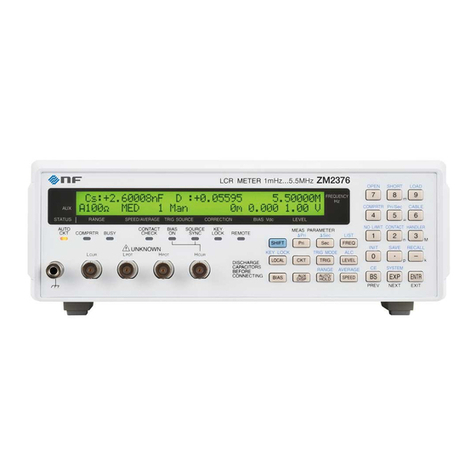
NF
NF ZM2376 instruction manual
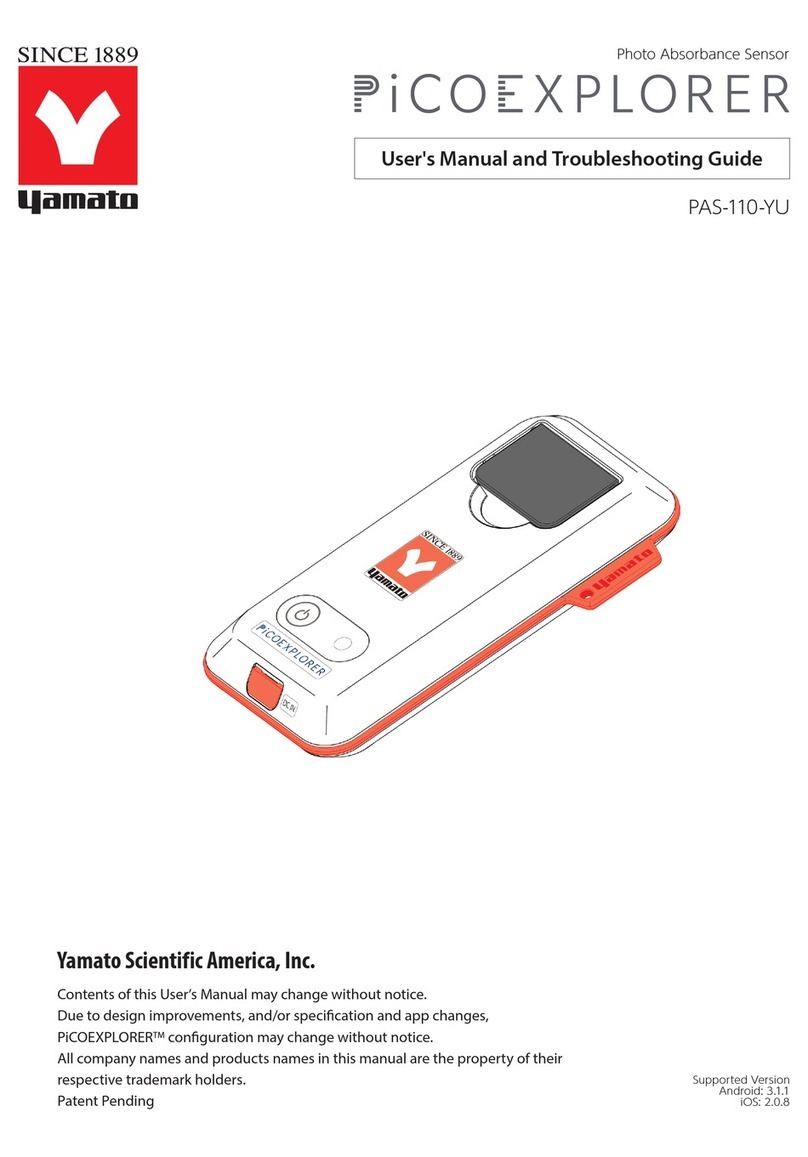
Yamato
Yamato PiCOEXPLORER PAS-110-YU User's manual and troubleshooting guide
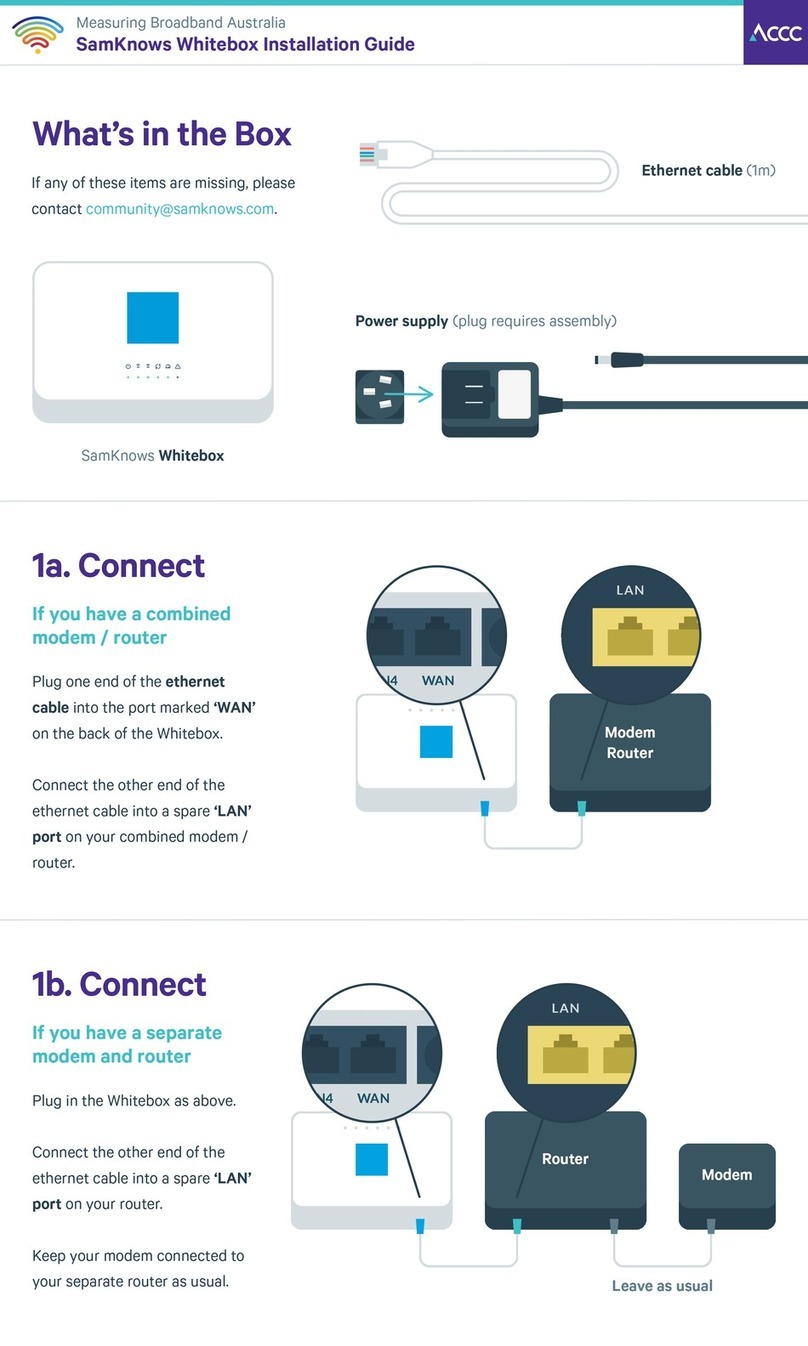
SamKnows
SamKnows Whitebox installation guide
